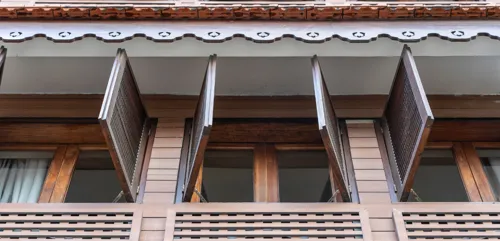Cracks in your window sills aren’t just cosmetic—they’re a gateway for water infiltration that can lead to rot, mold, and costly structural damage. Over time, exposure to weather, natural material wear, and building shifts can strain your window sills, causing cracks that widen with every temperature fluctuation and moisture exposure. Without the right repair method, these cracks can jeopardize both the appearance and durability of your windows. In this article, we’ll dive into the most effective repair options.
What causes window sill cracks?
Answer: Window sill cracks often result from a combination of factors including weather exposure, structural shifts, and material degradation. Over time, exposure to moisture and temperature fluctuations can cause materials to expand and contract, leading to cracks. Additionally, settling of the building or improper installation can contribute to this issue.
The following image is from one of our clients, showing a window sill with visible cracks, highlighting the need for a robust repair method.

1. How does epoxy injection work?
Answer: Epoxy injection is a popular method for repairing window sill cracks, especially in concrete or stone sills. This process involves injecting a two-part epoxy resin into the cracks, which then hardens to form a strong bond. The epoxy not only fills the crack but also reinforces the surrounding material, providing a durable repair. This method is particularly effective for structural cracks that require additional support.
2. What is the process of using a patching compound?
Answer: Patching compounds are another effective solution for fixing window sill cracks, particularly in wooden or plaster sills. The process involves cleaning the crack, applying the patching compound, and smoothing it out to match the surrounding surface. Once dried, the area can be sanded and painted to blend seamlessly with the existing sill. This method is ideal for cosmetic repairs where structural integrity is not compromised.
More information about the price of windows can be found on our cost page.
3. How is caulking used for window sill cracks?
Answer: Caulking is a versatile approach for sealing minor cracks and preventing moisture ingress. It involves applying a flexible sealant into the crack, which can accommodate slight movements in the material. This method is suitable for small, non-structural cracks and provides a quick and cost-effective solution. However, it may not be suitable for larger or structural cracks that require more substantial repair.
Which method is best for long-term durability?
Answer: For long-term durability, epoxy injection is often the preferred choice due to its ability to reinforce the structure and provide a permanent fix. While patching compounds and caulking offer effective solutions for minor or cosmetic repairs, they may not provide the same level of structural support as epoxy. The choice of method depends on the severity and nature of the crack, as well as the material of the window sill.
Request a quote for window sill repair from our professionals for a quick and effective solution!







